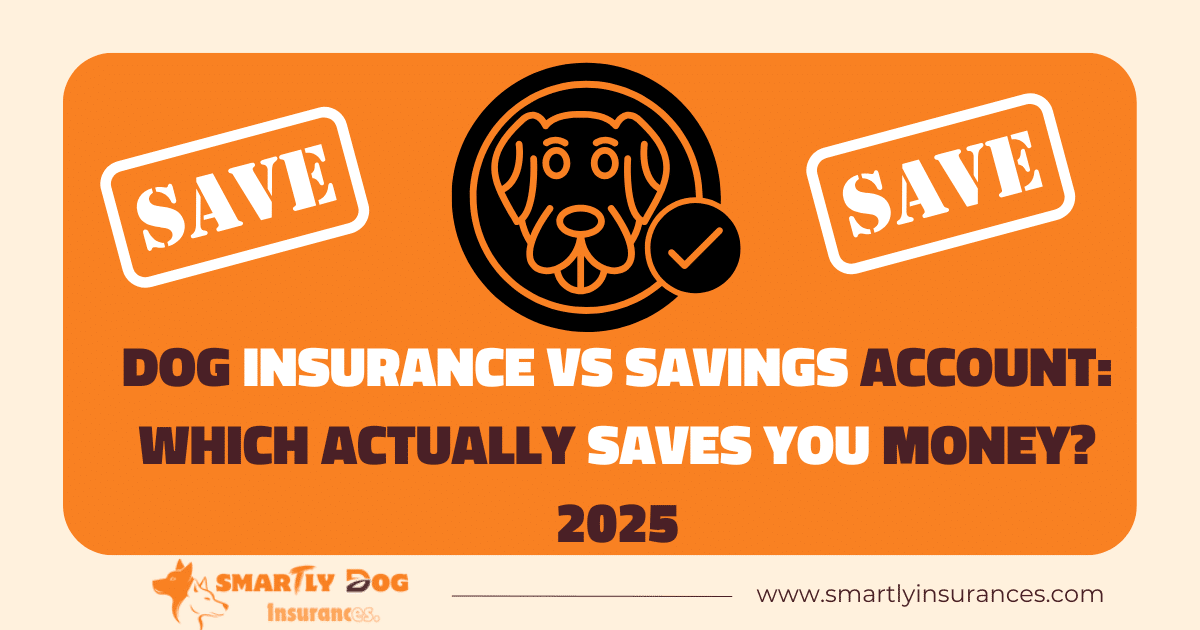Over 30% of pet owners skip vet visits to avoid high expenses. The numbers paint an even grimmer picture – 29% of pet parents lack funds for emergency care when their beloved companions need it most.
Veterinary costs have jumped 60% since 2014. Protecting our dogs from expensive medical bills has become more significant than ever. Pet insurance reflects this trend, as the U.S. market reached $4.27 billion in premiums in 2023 – a 21.9% increase from last year.
Selecting the right pet insurance comes with its challenges. Your policy might need upfront payment for vet expenses and won’t cover pre-existing conditions. Annual premiums for dogs average $675.61 for accident and illness coverage.
This piece will help you find your way through pet insurance options to secure a policy that saves money while ensuring quality care for your pet. You’ll learn how pet insurance works and discover key factors to consider before making this vital decision.
Understanding How Pet Insurance Actually Works
Pet insurance works through a simple reimbursement model. You should know that unlike human health insurance, you’ll pay the veterinary bill upfront and then submit a claim to your insurance provider. Most companies process claims within 5-7 days.
The reimbursement process has three main steps. You start by visiting any licensed veterinarian and paying for the services. You then submit your claim with the itemized receipt and medical records. Your insurance provider reviews the claim and sends reimbursement through direct deposit or check.
Your actual reimbursement amount depends on three main factors:
| Insurance Term | Description |
|---|---|
| Annual Deductible | Amount you pay before coverage begins (typically $100-$500) |
| Reimbursement Rate | Percentage of covered costs (70-90%) you receive back |
| Annual Coverage Limit | Maximum reimbursement per year ($2,500 to unlimited) |
Most policies come with waiting periods before coverage starts. Coverage for accidents typically begins after a few days, while illness coverage usually needs 14-15 days. Insurance companies use these waiting periods to protect themselves from claims on pre-existing conditions.
Pet insurance providers typically offer two main categories of coverage. Accident and illness plans provide detailed coverage, including broken bones, cancer, arthritis, and infections. Accident-only plans cover just injury-related expenses and serve as a more budget-friendly option.
Calculating Your Pet’s Insurance Needs
You need to understand your pet’s specific risk factors to choose the right insurance coverage. Your pet’s age affects premium costs by a lot – puppies and kittens usually have lower premiums. Middle-aged and senior pets face higher rates because of increased health risks.
Assess your pet’s age and breed risks
Your pet’s breed-specific health issues are vital in determining coverage needs. Larger breeds like Bernese Mountain Dogs often develop hip dysplasia. Brachycephalic breeds such as Bulldogs face respiratory challenges. These health predispositions directly impact insurance premiums and coverage requirements.
Estimate potential vet costs
The right coverage levels depend on potential veterinary expenses. Simple vet visits cost between $25 and $186. Emergency care costs can rise quickly:
| Emergency Service | Cost Range |
|---|---|
| Minor Emergencies | $600-$1,700 |
| Emergency Surgery | $3,000-$10,000 |
| MRI Scans | $2,500-$3,500 |
| 5-Day Hospitalization | Up to $3,500 |
Consider your emergency savings
Experts suggest keeping an emergency fund between $2,500 and $8,000 for pets without insurance. Pet insurance becomes especially valuable if building such savings is difficult. It covers 70% to 100% of eligible emergency costs after deductibles.
Financial planning gets more complex with multiple pets. Pet owners spent an average of $2,085.60 on their animals in 2024, and 36% expect higher expenses in 2025. A monthly savings of $50-$100 helps build a safety net, especially when you have insurance coverage.
Compare Plans That Match Your Budget
You need to think about several factors when selecting a pet insurance plan, particularly coverage and costs. Accident and illness coverage for dogs averages $676 per year, and cat insurance typically costs $383 annually.
Simple vs detailed coverage differences
A simple accident-only policy costs about $204 yearly for dogs and $116 for cats. These plans protect your pet against injuries from accidents, broken bones, and emergency care instead of covering all medical needs.
Detailed accident and illness policies give you broader protection and cover:
| Coverage Type | What’s Included |
|---|---|
| Accidents | Broken bones, swallowed objects, bites |
| Illnesses | Cancer, infections, arthritis |
| Diagnostics | Blood work, x-rays, ultrasounds |
| Medications | Prescribed treatments |
Deductible and premium tradeoffs
Deductibles and premiums work similarly to other types of insurance. Your monthly premiums increase by about $20 if you choose a $200 annual deductible instead of $500. A $1,000 deductible can lower your monthly costs by about $35.
Your final premium costs depend on several factors:
- Your location and local veterinary costs
- Your pet’s age and breed characteristics
- Annual coverage limits
- Your chosen reimbursement percentage (70-90%)
The policy customization process balances three essential elements: deductible amount, reimbursement rate, and annual coverage limit. Monthly premiums become more affordable with a higher deductible and lower reimbursement rate. This approach works best for healthy pets when you have an emergency fund ready for unexpected costs.
Smart Ways to Lower Your Premium Costs
Pet insurance companies provide smart ways to cut down premium costs while keeping your coverage solid. Learning about these options helps you save money and protect your pets properly.
Multi-pet discounts
You can save big money with multi-pet discounts if you have several animals. Many providers give 5-10% discounts for each additional pet. ASPCA takes 10% off for every extra pet, and Figo reduces second pet enrollment by 5%.
| Provider | Multi-Pet Discount |
|---|---|
| Nationwide | 5% for 2-3 pets, 10% for 4+ pets |
| Pets Best | 5% on BestBenefit plans |
| MetLife | Shared deductible for up to 3 pets |
Annual payment savings
You can unlock extra discounts by paying your premiums yearly instead of monthly. Providers like Lemonade give better rates for upfront payments. You can save up to 5% more by bundling pet insurance with home or auto policies.
Wellness rider worth it?
Wellness riders cost between $20-$40 monthly and cover routine care services. These add-ons include:
- Annual wellness exams
- Routine dental cleanings
- Vaccinations
- Preventive treatments
Wellness plans might not always give you the best value. Your existing insurance might already cover some services, which could increase your total costs. Younger pets might benefit more from a dedicated savings account as an economical solution.
Your pet’s routine care costs versus the rider’s premium will help you decide if this option works for you. These plans usually work best as part of complete coverage and make budget planning easier.
When Pet Insurance Pays Off Most
Pet insurance shows its true value when medical emergencies strike. Without proper coverage, emergency surgeries can cost anywhere from USD 3,000 to USD 10,000, which puts immense strain on family finances.
Emergency surgeries
Medical emergencies can happen at any time and your pet might need immediate veterinary care. Your pet might swallow something dangerous, break a bone, or ingest toxic substances. The good news is that pet insurance covers 70% to 100% of these costs after deductibles. This coverage helps pet owners make critical care decisions without financial stress.
| Emergency Procedure | Typical Cost Range |
|---|---|
| Foreign Object Surgery | Up to USD 5,000 |
| Cancer Treatment | USD 3,000-10,000 |
| Diagnostic Tests | USD 250-3,500 |
Chronic conditions
We noticed that pets develop ongoing health issues that need long-term care. Some common chronic conditions include:
- Arthritis and skin problems
- Diabetes and cancer
- Inflammatory bowel disease
- Allergies and gastrointestinal issues
These conditions just need regular veterinary checkups, blood tests, imaging, prescription diets, and ongoing medication. Without doubt, these recurring costs can become overwhelming, often reaching hundreds of dollars monthly.
Breed-specific health issues
Genetic predispositions make certain breeds face higher health risks. French Bulldogs, Bulldogs, and Pugs often struggle with breathing issues that need expensive treatments. Great Danes and Boxers have higher chances of developing heart conditions.
Large breeds cost more to treat than smaller ones. Several factors contribute to this:
- More expensive surgical procedures
- Larger medication doses
- Higher equipment costs
- Earlier onset of age-related issues
Knowing these breed-specific risks helps you choose the right coverage level. Most detailed plans cover hereditary and genetic conditions that develop after the policy starts.
Conclusion
Pet insurance is an important financial safety net that protects against unexpected vet bills. A detailed look at coverage options, deductibles, and reimbursement rates helps protect pets while keeping costs in check.
The right insurance policy depends on your specific situation. Your pet’s age, breed-specific health risks, and your budget will determine coverage needs. You’ll often find the best value in a higher deductible combined with detailed coverage – it strikes a good balance between monthly payments and protection against major expenses.
Pet insurance becomes a vital investment when you look at emergency costs that can run from $3,000 to $10,000. Getting the right coverage lets you focus on your pet’s health instead of worrying about money during medical emergencies.
The ideal time to get pet insurance is early in your pet’s life, while they’re still healthy. Pre-existing condition exclusions will limit your options if you wait until health problems develop. Getting the right policy today ensures your furry friend gets the care they need throughout their life.



